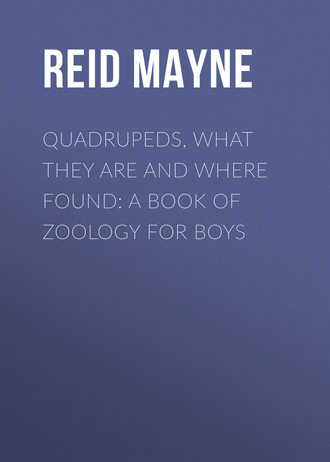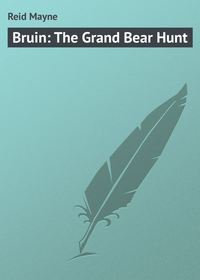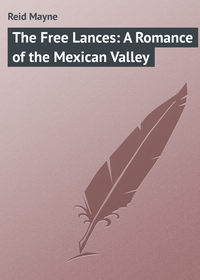 полная версия
полная версияQuadrupeds, What They Are and Where Found: A Book of Zoology for Boys
With regard to the Civet-Weasels– or Civet Cats, as they are commonly called – there is a still greater variety, both in genera and species: so many, indeed, that, as already stated, they have been arranged in a family by themselves. They may be regarded, however, as large weasels, distinguished from the others by their having a sort of pouch or gland under the tail, in which is secreted an unctuous and highly odorous substance. This, in some species, as in the true civets, is relished as a perfume or scent, while in others it is an extremely disagreeable odour. The true civet is a native of North Africa; where it is kept in a tame state, for the purpose of obtaining from it the well-known perfume of commerce. An allied species, the Rasse, belongs to Java – and is there also kept in cages for the same purpose – while in Asia – from Arabia to Malabar, and among the Malays and Arabs of Borneo, Macassar, and other islands of the Indian Archipelago – still another species of civet affords a similar perfumed substance.
The Aard Wolf (earth wolf) of South Africa is usually classed among the civets, but with very slight reason. It is far more like the hyena; and is certainly nothing else than a hyena.
The Delundung of Java is a creature that bears a resemblance to the civets; and may be regarded as forming a link between these and the true cats.
The Genets constitute a division of the civet-weasel tribe; and one of which there are numerous species. They are usually pretty spotted creatures, with immensely long tails; and but for their cruel and sanguinary habits would, no doubt, be favourites. They exist in South Europe; and, under different forms and appellations, extend over all Africa to Madagascar and the Cape – as well as through the countries of Southern Asia and the Asiatic islands.
The Ichneumons claim our attention next. These are celebrated animals, on account of the strange and fabulous tales related of the species known as the Egyptian ichneumon, which, among the people of Egypt, is domesticated, and was once held as a sacred animal. Besides the Egyptian ichneumon, there are several other species in Africa – one belonging to Abyssinia, and no less than six to the countries near the Cape. The Garangan of Java is an ichneumon; and so also are the Mongoos and Nyula of Nepaul; while in the Malay peninsula is a species known as the Malacca ichneumon. The Paradoxure is usually classed with the civets, though it wants the perfumed pouch; and the Suricate or Meer-cat, of the Cape colonists, takes its station in this group. A badger-like animal of Madagascar, the Mangu, is also regarded as a civet: so, too, are the Coatis of the New World, though these last are evidently of much nearer kin to the badgers.
Perhaps the curious creature known as the Potto, or Kinkajou, has more pretensions to a place among the civets: at all events, it deserves one in the general group of the weasels.
Chapter Six.
Tame Dogs
Perhaps of all other animals the dog has been the earliest and most constant companion of man. His swiftness and strength, but more especially his highly-developed power of smelling, have made him a powerful ally against the other animals; and these qualities must have attracted the attention of man at an early period – particularly in those times when the chase was, perhaps, the only pursuit of mankind.
No animal is more widely distributed over the earth. He has followed man everywhere; and wherever human society exists, there this constant and faithful attendant may be found – devoted to his master, adopting his manners, distinguishing and defending his property, and remaining attached to him even after death.
It is a question among naturalists as to what was the parent stock of the dog. Some allege that he has sprung from the wolf; others that he is a descendant of the jackal; while not a few believe that there were true wild dogs, from which the present domesticated race had their origin. These ideas are mere speculations, and not very reasonable ones either. It would not be difficult to show, that different kinds of dogs have sprung from different kinds of animals – that is, animals of the same great family – from wolves, foxes, jackals, zerdas, and even hyenas. This can be proved from the fact, that domesticated breeds among savage tribes, both in Asia and America, are undoubtedly the descendants of wolves and jackals: such, for instance, as the Esquimaux dog of the Arctic regions, the Dingo of Australia, the Indian dogs of North America – of which there are several varieties – and also one or two kinds existing in Mexico and South America.
Naturalists deny that there are any true dogs living in a wild state. This is simply an unreasonable assertion. Wild dogs of several species are to be met with in Asia and America; and if it be asserted that these originally came from a domesticated stock, the same cannot be said of the hunting dog of Southern Africa – which is neither more nor less than a wild hound.
Perhaps none of the animals that have submitted to the conquest of man have branched off into a greater number of varieties than this one. There are more kinds than either of horses or oxen. We shall not, therefore, attempt a description of each; but limit ourselves to speak of those breeds that are the most remarkable – or rather those with which the reader is supposed to be least familiar. To describe such varieties as the spaniel, the greyhound, the mastiff, or the terrier, would not add much to the knowledge which the English reader already possesses.
One of the most remarkable of dogs is the huge mastiff of Tibet. He is long-haired, and usually of a jet black colour. He is quite a match in size for either the Newfoundland or San Bernard breeds, and not unlike one or the other – for it may be remarked, that these in many points resemble each other.
The Tibet dog, as his name implies, is the property of the Tibetians: especially the Bhootees – the same people who own that curious species of cattle, the Yäk, or grunting ox, and who reside on the northern slopes of the Himalaya mountains. It may be inferred, therefore, that the Tibet dog affects a cold climate; and such is in reality the case. He cannot bear heat; and does not thrive, even in the kingdom of Nepaul. Attempts to introduce the breed into England have resulted in failure: the animals brought hither having died shortly after their arrival.
The masters of these dogs – the Bhootees, or Bhoteas, are a singular race, of a ruddy copper colour, rather short in stature, but of excellent disposition. Their clothing consists of furs and woollen cloths, adapted to the cold climate which they inhabit. The men till the ground, and keep yäks and sheep, and sometimes come down into the warm plains to trade – penetrating even to Calcutta. The women remain at home, their only protectors being these great dogs, who watch faithfully over their villages and encampments, and fly fiercely at any stranger who may approach them. It is said that they are especially hostile to people who have a white face; but this disposition is also characteristic of the dogs belonging to the American Indians – and perhaps those possessed by all savages with a coloured skin.
The Dingo, or dog of Australia, is an animal domesticated among the aborigines of that country. He is a dog of wolf-like shape, who does not bark, but utters only a mournful howling. He is used by the wretched natives both for the chase and as an article of food; and is a fierce and voracious creature – not hesitating to launch himself on the larger kinds of animals. He is especially employed in hunting the kangaroo; and sometimes terrible combats occur between the dingo and the larger species of kangaroos – resulting always in the death of the latter.
The San Bernard dog, supposed to be a cross between the mastiff and shepherd’s dog, is too celebrated to require a description here. His sagacity in discovering travellers amid the Alpine snows, and guiding them upon their path, is the quality upon which the fame of this dog has been founded; but it may be remarked that many of the feats attributed to him have their origin in the fertile fancies of Parisian writers.
The Esquimaux dog is another celebrated variety. He is an animal with a fox-like face and thick coat of whitish hair, generally tinged with yellow. He is to the Esquimaux a most valuable companion: trained to draw their sledges over the surface of the snow, and enabling them to make long and rapid journeys – without which these singular people would be ofttimes in danger of perishing amid the inhospitable regions they inhabit.
The Indians of North America possess two or three varieties of domesticated dogs, evidently derived from the wolves of that region. Indeed, the common Indian dogs, found among the Sioux and other northern tribes, bear so close a resemblance to the large American wolf, that they are often taken for this animal, and in consequence shot, or otherwise killed by mistake. The Indians use them for carrying burdens: their tents and tent poles being transported by these animals on long journeys across the prairies. Their flesh is a favourite article of the savage cuisine; but it is too costly to be used as an every-day food; and is only served up on grand festive occasions. Like the dogs of Tibet, these Indian wolf dogs have the greatest antipathy to a white skin; so much so, that even a friend in that guise can rarely obtain either their confidence or friendship.
A smaller kind than the common one is found among certain tribes, and appears to have derived its origin from the prairie wolf – the jackal of America – while the Hare Indians of the Rocky Mountains possess a third variety; and it is known that still another exists among the tribes of Russian America. This last is short-haired and smooth-coated: therefore differing altogether from the Indian dogs of the prairies.
In Mexico, there are two or three native dogs: found there on the arrival of Europeans. One is the Alco– a dog remarkable for a curious hunch or protuberance upon the back and shoulders, a thick short neck, and small pointed muzzle. He is thinly covered with long hair, of a yellowish colour.
Another singular variety is the dog of Chihuahua and this is, perhaps, the smallest of all canine creatures. Full-grown specimens have been seen, whose dimensions did not exceed those of the common rat; and a singular fact, well authenticated, is, that this dog, when transported from Chihuahua to any other place – even to the city of Mexico itself – invariably becomes larger, or degenerates, as the Mexicans have it! There is also in Mexico a hairless dog. It is, no doubt, the same as that known by the name of Turkish dog; since this variety came originally from Spanish America.
In South America, there are several species of native dogs, found among the savages of the Orinoco and Amazon. They are small animals, usually of a whitish colour: but their owners follow the curious practice of dyeing them with annatto, indigo, and other brilliant dyes, for the purpose of rendering them more ornamental!
We can only find space to say that there are many other varieties of domesticated dogs, almost unknown beyond the countries in which they are found. Such are the Quao of Rhamgur, the Sumatran dog, the Poull of New Ireland, the dogs of Patagonia and Tierra del Fuego – those of the South Sea Islands; and the Waht that inhabits some of the ranges of the Himalayas.
It is reasonable to suppose that there is not a nation upon earth, hardly a tribe – civilised or savage – that does not possess some variety of the canine race differing from all the others.
Chapter Seven.
Wild Dogs
By Wild Dogs, we mean not only several sorts of true dogs, that in different parts of the world are found living in a wild state; but also Wolves, Foxes, Jackals, Hyenas, and Fennecs – for all these are but dogs in a state of nature.
First, we shall speak of the true dogs living in a wild state – that is, apart from the society of man.
It is not necessary here to go into the often-debated question, as to whether dogs were originally wolves, or what species of wolf the dog is descended from. This is all mere speculation, and answers no purpose. It is just as likely that wolves sprang from dogs, as that dogs came from wolves; and every one may perceive that two breeds of the dog species are often far more unlike each other – both in appearance and habits – than a dog is to a wolf itself. Again, foxes differ only from wolves in point of size; and a small wolf is in reality a fox, while a large fox may be equally regarded as a wolf. Furthermore, the jackal is nothing else than another form of the same animal – the wolf or dog, whichever you choose to term it; and the hyenas but a still uglier shape of the same carnivorous creature.
With regard to the true wild dogs – which are not regarded as wolves – we find them existing in various parts of the world. They usually live in communities, and have the habit of hounds – that is, they hunt in packs. Whether they were originally dogs in a domesticated state, and have since seceded from the society of man, is a question which naturalists are unable to agree upon.
In India there are two or three kinds of wild dogs living thus. One in the Deccan – called Kolsun by the Mahratta people – is a reddish-coloured animal, nearly as large as the common European wolf. It dwells in the forests, far remote from the villages – and of course lives by preying upon other animals – just as wolves and foxes do. Again, in the forests of the Himalaya mountains there is another species of wild dog, different from that of the Deccan. It is usually known as the wild dog of Nepaul, from its being found in many parts of that kingdom. A large community of these animals is often met with in the mountain forests – living in caves, or at the bottoms of cliffs, where there are deep crevices among the boulders of loose rocks, that afford them a secure asylum when pursued by their enemies. In these places the dogs sleep, and bring forth their young; and the puppies are taught to be exceedingly wary, and not stray far from their dens during the absence of the mothers. Indeed, so cunning do they become when only a few days old, that it is difficult to capture one of them outside its impenetrable lodging-place.
During many hours the old ones are abroad, in pursuit of the animals upon whose flesh they subsist; and, as already stated, these dogs follow their game not singly, but in bands or packs. In this way, instinct teaches them that they will have a better chance of success; since they are more able to head the pursued animal, turn it in different directions, and at length run it to the ground. A curious fact is related of the cunning of these wild dogs. It is stated that when in pursuit of the larger animals – such as stags and large antelopes that inhabit the same district – instead of running them down at once, the dogs manoeuvre so as to guide the game to their breeding place, before giving the final coup to the chase! The object of this is to bring the carcass within reach of their young; which, were it killed at a great distance off, would be obviously impossible. Such a habit as this would prove them possessed of something more than instinct; but for all that, it may be true. A fact seems to confirm it: the fact that a large quantity of bones is always observed in the immediate neighbourhood of the breeding places – some of these being of such a size as to preclude the belief that they could have been carried thither by the dogs themselves.
In Ramghur there is a wild dog called Quao, or Quaw, which lives in communities, just as those of Nepaul; and still another kind inhabits the forests of the Island of Sumatra.
None of these kinds are to be confounded with the half-wild dogs of India, called pariah dogs; since the latter, although not owned by individuals, dwell in the villages, and of course associate with man. Besides, the pariahs are of no particular breed – there being several sorts of pariah dogs. They are merely outcast curs, without owners, that pick up a living as they best can.
Passing from India to the tropical countries of America, we find another sort of wild dog in the forests of Guiana, known as the Koupara, or Crab-dog. It is not certain whether these dogs are indigenous to Guiana, or the progeny of some domestic variety introduced by the colonists. They dwell in small troops or families, of six or seven individuals each, and their food is furnished by the pacas, agoutis, and other small rodent animals of tropical America. They also find sustenance in several kinds of crabs, which they adroitly capture upon the banks of the rivers; and it is from their habit of feeding upon these they have derived the name of crab-dogs. They are easily tamed; and when crossed with other breeds, a variety is produced which is esteemed by the natives as the very best kind for the hunting of the agoutis, cavies, and capibaras.
The wild dogs of the Cape country, called Wilde Hunden (wild hounds) by the Dutch, are usually regarded as near akin to the hyenas. But they are more like real wild hounds than hyenas; and their colour – which is a mixture of black, white, and tan – almost points to them as the progenitors of that variety of dog known as the hound. Their habits, too, would seem to confirm this hypothesis: for it is well-known that these animals pursue their prey just after the manner of a pack of real hounds – doubling upon it, and using every artifice to run it down. The numerous species of ruminant animals – the antelope in particular – are the especial objects of their pursuit, and upon these they subsist. Like the Indian wild dogs, they live in communities – using the burrows of the wild hog and ant-eater, as also the hollow ant-hills, for their lairs and breeding places. Travellers passing across the plains of South Africa have often witnessed the splendid spectacle of a pack of these beautiful wild hounds in pursuit of a large antelope, and almost fancied themselves looking at a stag hunt, with a kennel of real hounds going at full view!
The true wild dog of all is that creature so well-known and celebrated in all our tales of childhood – the Wolf.
To describe the wolf, or even to give an account of his habits, would be superfluous. Almost every one is acquainted with the gaunt form, the shaggy hide, and tierce aspect of this formidable creature; and every one has heard of his fierce and savage disposition: for who is ignorant of the story of “Little Red Riding Hood?”
The presence of this much-disliked animal is almost universal: by which I mean, that in some form or other he is represented in almost every corner of the globe. You may say there are no wolves in Africa; but this is not true: for the hyenas are nothing more nor less than wolves, and wolves of the very ugliest kind.
Fortunately wolves are no longer found in Britain, though they were once plentiful enough in these islands; but all over the continent of Europe there are still numerous wolves in the forests and mountains.
The Common Wolf, that is, the wolf of Europe, is the type of the family; but this type offers many varieties – according to the different localities in which it is found. I shall here notice these varieties.
French wolves are generally browner and smaller than those of Germany; and the wolves of Russia, Sweden, and Norway are still stronger animals, and of a more sinister appearance. These differ very much in colour, which in winter is almost white. Again, the Alpine wolves are smaller than the French, and of a brownish-grey colour; while those of Italy and Turkey have a yellowish tinge. Black wolves are not uncommon, especially in the Pyrenees of Spain; but whether these, as well as the others, are all mere varieties of the common wolf, or whether there are two or three distinct species of European wolf, are questions to be left to the disputation of systematic naturalists.
Over all the continent of America, from the Arctic shores in the north to Tierra del Fuego in the south, wolves are found; and here again there are varieties in size, colour, and even habits, that may fairly entitle the different kinds to rank as separate species. Most certainly there are distinct species, for that known as the Prairie Wolf, and also the Coyote of Mexico, are two kinds that more resemble jackals than real wolves.
Besides, other wolves of the American continent, as the Brown Wolf of Mexico, the great Dusky Wolf of the Upper Missouri, the Aguara Dog of South America, the Wild Dog of the Falkland Islands, the Fox Wolves of Patagonia and Terra del Fuego, the Guazu of Paraguay and Chili, and the North American Common Wolf – are all animals of such different appearance and habits, that it is absurd to term them varieties of the same species. In Asia we have just the same series of varieties – that is, in every part of the great continent is found some representative of the tribe, which in reality is no variety, but an original and indigenous animal of the wolf kind – such as the Sandgah, or Indian wolf of the Himalayas; the Beriah, another Indian wolf; and the Derboom, a black species that inhabits the mountains of Arabia and Syria.
In Africa the wolf is represented by the hyenas, of which there are at least four species – one of them, the common hyena, belonging to the northern half of the African continent, and extending its range into several countries of Asia. At the Cape, and northward into Central Africa, three large species of hyena, and one small one (the Aard wolf), represent the lupine family. The Jackal, too – of which there are several distinct kinds in Asia and Africa – is only a wolf of diminutive size and gregarious habit.
This creature is fairly represented in America by the Coyote of Mexico, and the Barking Wolf of the prairies; and in Asia, upon the steppes of Tartary, by the Corsac.
Even in Australia, where new mammalia have turned up in such odd and fantastic forms, the wolf has his congener in that curious creature known as the Tasmanian wolf.
With regard to foxes, they, like the wolves, are distributed almost universally over the globe; and exhibit a like variety of forms and colours, according to the different localities which they inhabit. Their name is legion.
As the smallest representatives of the wild dogs, we find in Africa the curious little creatures known as the Fennecs. Of these there are also varieties; for, although very much alike in habits, the Fennecs of Abyssinia and those of the Cape are evidently distinct species.
Chapter Eight.
Cats
The Lion is the king of cats; though there are some who think that the Tiger has a better claim to the throne. In point of size and strength, there is not much difference between these two animals. The lion appears larger, on account of his shaggy mane; but specimens of the tiger have been taken whose measurement was equal to that of the largest lion. Otherwise, the tiger is decidedly superior in courage, in address, and in beauty; in fact, the royal tiger is one of the most beautiful of animals; while the lion, notwithstanding the great fame he enjoys, is among the very ugliest of brutes.
These two powerful creatures often meet in the jungles of India, and try their strength in single combat. It is not decided which is superior in prowess, since victory is sometimes on one side and sometimes on the other. No doubt this depends on the individuals who may engage, for lions are not all alike, nor tigers neither. Both differ in strength and courage, just as men do; and this difference is caused by a variety of circumstances – such as age, size, season of the year, nature of the country and climate, and many like contingencies.
Remember that the lion is found both in Asia and Africa, and nowhere else. He inhabits the whole of Africa, from the Cape to the shores of the Mediterranean, and there are three well-marked varieties on that continent. In Asia he is only found in its southern part – that is, in the tropical and sub-tropical regions; and there are also two or three varieties of the Asiatic lion.
With regard to the tiger, he is altogether an Asiatic. There are no tigers in Europe, Africa, and America – of course we mean in their wild state; and the stories of tiger-hunts in Africa and America, frequently to be met with in books and newspapers, are the narratives of mere ignorant travellers, who confound the royal tiger with several species of spotted cats – of which we shall presently speak. We may add that the tiger, although exclusively Asiatic, is not exclusively tropical in his haunts. Tigers are more abundant in the hot jungles of India and some of the larger islands of the Indian Ocean than elsewhere; but they have also been observed far to the north of the Himalayan chain on the great steppes that extend almost to the confines of Siberia.









